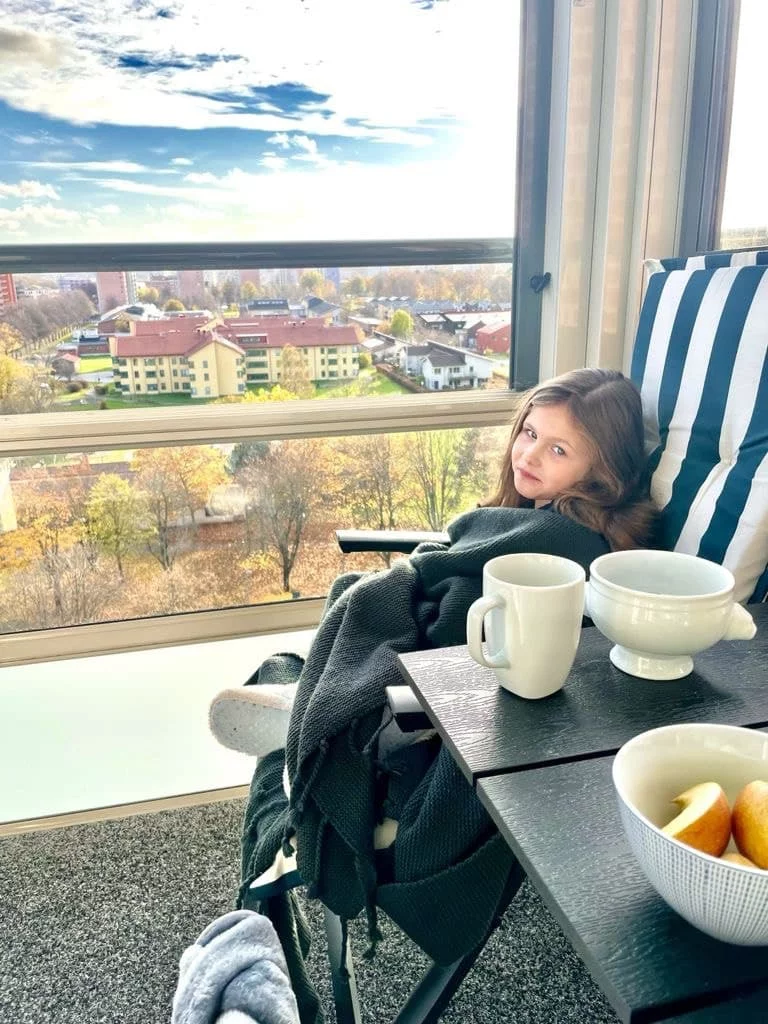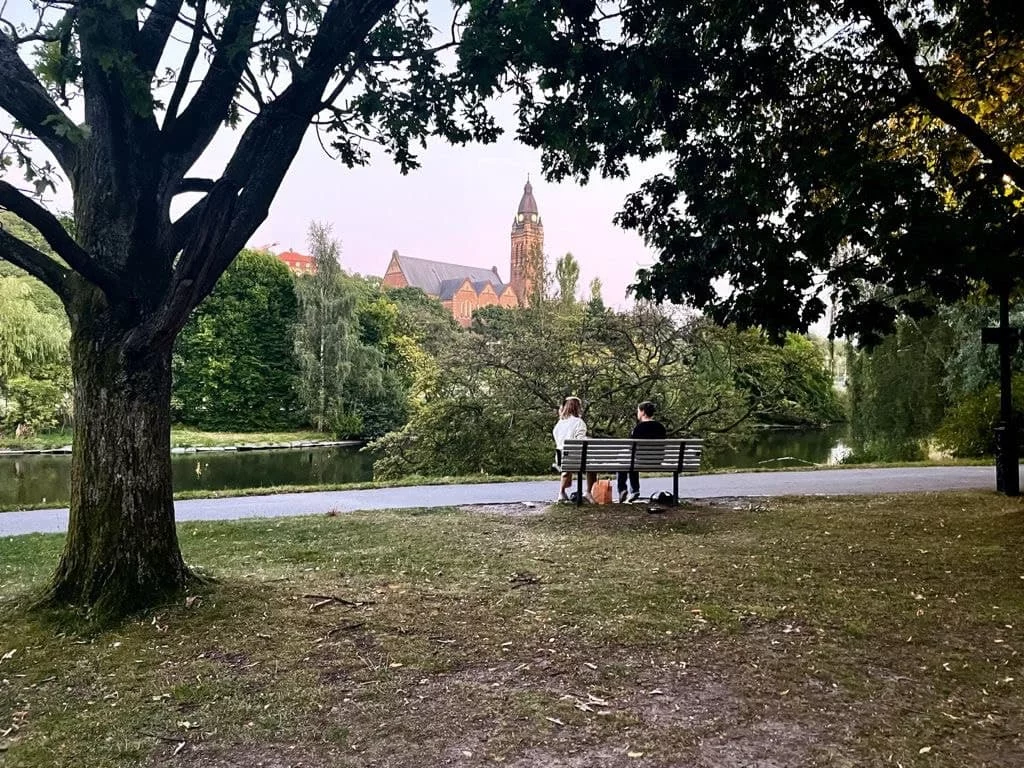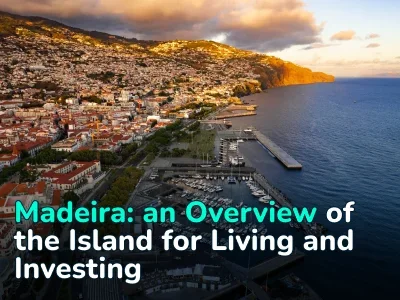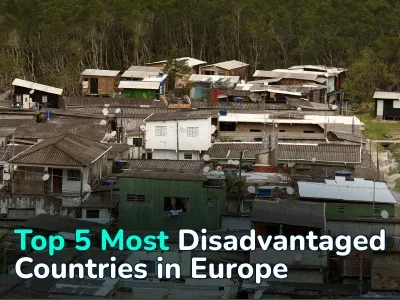
«Sorry, but only people over 60 can live in our apartment.» Alisa from Russia told about all the intricacies of moving to Sweden
Two months ago, Alisa, her husband Sergei and her daughter Olya moved from Moscow to the Swedish city of Gothenburg. During this time, the family managed to rent an apartment, arrange a school for their daughter and explore the city while simultaneously observing the life of the locals. Alisa told a Realting.com journalist about all the intricacies of moving and the nuances of adapting to this northern country.
All important nuances about documents, or the initial stage of moving
My husband and I constantly traveled and visited different countries, so we didn’t consider the option of living somewhere in Europe extraordinary at all. We had liked Sweden for a long time, and when Sergei received an offer to work in Gothenburg, we, without thinking twice, agreed.
To move to Europe, you need to get a work permit. It is a plastic card with your photo and biometrics, which allows you to live and work in the country. Usually it is issued for two years with the possibility of renewal, as in our case.
At the first stage, our move was organized by Sergey’s company, they rented an apartment for us for two weeks and paid for the entire move. And then the most interesting part began.
After the seven-day quarantine has expired, you need to go to the tax office to apply for the ssn:personal number — it is needed in order to deduct taxes to the state. Without it, it is impossible to sign a child up for school or kindergarten, it is almost impossible to rent an apartment. By the way, when submitting your documents for the snn, you need to indicate your address of residence, and this is where a long-term lease agreement comes in handy.
Then you need to apply for an ID-card (Swedish passport) and only after that can you go to the bank to open an account, issue your cards and make a bank-ID (a digital signature from a Swedish bank). The cards will then be sent to the post office. This is necessary in order not to pay wild interests every time for currency conversion for any payment (for your apartment, for example, or even buying groceries in a store).
What you need to do in advance, while still at home:
- Do not forget to translate all your documents into English with a notary . This is really important.
- Renew your passport or make a second, additional one.
- Go to the Swedish embassy and submit your biometrics there.
- Before leaving, notify the Ministry of Internal Affairs that you have a residence permit of another country and you are leaving (otherwise there may be problems with entering back).

«Sorry, but only people over 60 can live in our apartment.» About all the nuances of renting housing
Renting a house in Gothenburg is a long and painful topic. There are a lot of universities in the city and, naturally, students, which means that they immediately occupy all more or less affordable housing. When we arrived, the rental market was so overheated that we had practically no chance of renting an apartment.
Sergey’s company helped us with the move. The budget for renting our apartment from them was about $ 5000-6000, and this could have been enough for three months of renting a good apartment. But! Our relocation was very fast, the managers dragged on for a long time with tickets, and they began to look for housing for us three days before departure. In the end, we had only one option, and it cost about $ 6,000 for 2 weeks. Moreover, it was just a small apartment with one room and a kitchen, with an adjacent bathroom, from the secondary market. The landlord of this apartment simply shamelessly raised the price, taking advantage of the fact that his offer was the only one in the city for these dates. We were in shock.
Immediately after moving in, we started looking for our next apartment, since after 2 weeks we had to move out. But Swedish rental sites work on a completely different principle — you cannot enter them and just book any apartment, because the demand is much higher than the supply and you still have to fight for the right to rent an apartment. There are not so many Swedish sites for finding housing, and on each, after setting all the filters, you must definitely tell owners about yourself: who you are, where you came fromM it is advisable to write your salary (the chances that the apartment will be rented out to you will increase). Indicate if you smoke, if there are children, pets, where you work, etc. Don’t forget to add your happy family photo. And then the most interesting thing: if you are lucky and the landlord likes you, they will answer you, ask you a couple more questions, and maybe make an appointment. Of course, not immediately, but in a week or two.
Also, landlords can refuse you without giving a reason. The reasons for the refusals that we personally encountered were the following:
- «You have a child, and we are looking for tenants without children.»
- «Sorry, but you are under 60, and only people over 60 can live in our apartment.» Here I will explain: the Swedes are very scrupulous about their neighbors. If an overwhelming majority of pensioners live in an apartment building, then only pensioners can also be allowed into a rented apartment. They do not want youth and children, otherwise the neighbors will be uncomfortable.
- «You have no animals, but all our neighbors are dog lovers. YOU will feel uncomfortable. »
- «There are three of you, but our apartment has only 2 rooms, it is small for you.» The Swedes believe that each family member must have their own room, plus a common living room.
- «You are not suitable for our commune.» The fact is that Swedes live in communes, when several houses are united in a group and decide all issues at a general meeting of residents. And the question of who can rent a house in these houses is considered very serious. That is, the owners of the apartments cannot decide for themselves who to rent out to — for this you need to secure the consent of all neighbors.
And now for one more shock content. If you bought an apartment in a commune and, for example, are rowdy or listen to music too loudly, then at a general meeting of residents you may be asked to leave. And you will be obliged to sell the apartment and leave. And that is precisely why all Swedes dream of their own separate house somewhere near a lake, because only such housing is considered a full-fledged private property.



In total, I replied and wrote to more than 100 landlords, and got rejections everywhere. Interestingly, we eventually rented an apartment from a very smiling grandfather, who literally called us himself. We thought for a long time that they were scammers, and went to inspect the apartment simply out of despair. He showed us a dream apartment with a large living room, a glass balcony, two bedrooms, a dressing room, and a storage room. Plus a parking space was attached to the apartment. All this for a price that is quite acceptable by Swedish standards — $ 1,700 per month. Why did he call us himself? Later, the wife of this grandfather said that at one time her mother was very sick and only doctors from Russia helped to save her life, and because of this she feels special gratitude to Russians. That is, we were rented out housing only because we are Russian.

About Swedish primary education and adaptation
My daughter quite easily adapted to the new environment. Olya shows interest in the Swedish language, more than in Russian (unfortunately), and has already picked up local words. Sometimes she speaks a mixture of Russian, English and Swedish, but everyone understands everything. At the playgrounds, children speak to her in Swedish, she answers them in Russian or English, and they happily run to play.
Now Olya is already attending a kindergarten in Swedish school and is slowly joining the educational process. Despite the fact that she is 5 years old, she was not taken into kindergarten.
It is interesting that there are no grades here until grade 6 — all children are equal, teachers do not single out favorites, in schools they do not put anyone as an example or above others. Here every child is individual, they develop an approach to each person. If there are problems with academic performance or behavior, the child will be called in with the parents and talk to the teacher in private. Plus, all children are obliged to go to sports sections, and physical education lessons are often held in the open air.
Education and food in Sweden is absolutely free for all children. You don’t need to bring anything to school: all notebooks, pens, textbooks, manuals, erasers are given out. Instead of textbooks at school, Olya was given an ipad 10. Also, each child under 16 gets payments, which in our case fully cover the cost of the sports section.
Another feature is that children clean up after themselves at school and there is a duty class that is responsible for cleaning the entire school. And it works: Swedish children never throw a candy wrapper on the floor and always wipe the table in the dining room after using it.

«The only thing they can talk about easily with strangers is about the weather.» About the peculiarities of the life of Swedes
After the rat race that is Moscow, it was difficult for me to get used to the slow and measured life of the Swedes. No one is in a hurry here. You have to wait 3-4 weeks for a washing machine bought from MediaMarket — no stress! You can wait a month for an answer from a school about enrollment, and that’s okay. My husband’s work place is very fond of hosting meetings. And after the meetings, you need to arrange meetings on the results of the previous meeting. And between them, fika (coffee break), loved by all Swedes. And at 16:30 — that’s it, sorry, the working day is over, we will finish the rest tomorrow. And at the same time, «no stress». Surprisingly, everything works properly, all projects are delivered on time (but the deadlines, however, are very long).
This is all clear and even familiar. But! They are in no hurry to take money for their work. My daughter and I have been skating for three weeks, and I’ve asked how to make payments three times. They answer me: «don’t worry, we will send you a link... Later.» And they don’t. Sergei went to the gym near the house to find out what and how. A polite girl showed him a price list and different options: with and without a sauna, prices where massages and a pool are included as well as without. And she added at the end: «You can first come for a week for free at one rate, then you can work out for free at another rate, also for a week, and then see what suits you best. And if you don’t like anything, you don’t have to pay anyway». It’s that easy.

Another interesting tradition for Sergei at work: every week all employees are gathered, everyone sits opposite each other and everyone says why they are happy. They take great care of the psychological state of the employees. So that no one is in any way overworking and so that they spend enough time with their family and take more breaks. It is believed that only a happy employee can be productive, not a tired and irritated employee. They are all about the «Work — life — balance» lifestyle, which is regulated here almost at the legislative level.
At the same time, Swedes are introverts in the purest definition of the word. Let’s say you met with a neighbor at the elevator, it arrives and you enter first, while your neighbor stays outside. He will nod at you cheerfully and wait for the next elevator. And it’s not even a matter of covid measures — it’s just that the Swedes respect each other’s personal space. If you are walking down the street with your Swedish acquaintance and meet his friends, then most likely you will not be introduced. And that’s fine. Why would Swedes need extra acquaintances? They make friends at school, and usually this tight circle contains 5-6 people and will not change for a Swede’s whole life. They will celebrate holidays in this circle, go on hikes with the same company, their children will be friends with each other, etc. In adulthood, finding new friends for them is rather an exception to the rule. «The only thing they can talk about easily with strangers is about the weather.»
It is also interesting — people do not look into each other’s windows. Everything is open in Sweden. You walk down the street and see a family sitting at the table and having dinner, and their dad is already watching football on the couch. Windows are large and wide almost everywhere, and curtains are rare. The balconies of the first floors often «stand» right on the ground — you can just go and step over, but, of course, no one does that.
Also, the Swedes are absolutely conflict-averse, they will do their best to things out corners and avoid quarrels. In response to rudeness or voice rising, a Swede will most likely smile and politely, but firmly make it clear that the conversation is over. But they will never enter a fight.
If dissatisfaction with subordinates is brewing at work, then the management will not show it, will not reprimand them verbally, but will most likely write an e-mail: «Our dearest, you are great, but let’s do our best next month to improve the productivity of your department.»

«The most important discovery for me is the free time that I can spend with my family.»
In Sweden, the way of life and the structure of living in «sleeping areas» is very interestingly organized. Sleeping areas in Gothenburg are neighborhoods located a few tram stops from the city center (the journey will take about 20-25 minutes). There is one kindergarten for every 5-6 houses, and it will be located in the center of the complex or on the first floor of one of the residential buildings. Often they have groups of 5-10 children with two caregivers. And the teacher might as well be a man, this is not uncommon here. In general, in Sweden women and men are engaged in childrearing on an equal basis. For example, on the streets of the city you can often meet a dad with a stroller than a mom. And dads go on paternity leave very willingly — here dads are given 3 months of paid paternity vacations. Moreover, it is mandatory and the law is regulated by the state.
A little more about the organization of space — even on the small island of Donsö with a population of 1550 people, the infrastructure is very well developed. There is a large supermarket, shops, restaurants, cafes, and other establishments, even a flea market. Plus several beaches, a lot of yachts and boats. It seems like every inhabitant of the island certainly has their own boat at the pier, while there are no cars on the island. People move on bicycles on perfectly flat roads or on electric mini-mobiles with open cabins. The water connection with the mainland turned out to be quite good — trams run every hour. And it seems that this is the real Swedish happiness: to live on such an island in your own house with a small boat at the pier.

But the most important discovery (advantage) for me after the move is free time. Here it seems to have increased. We have already begun to forget what the bustle of Moscow, the endless traffic jams, and the constant race at work are like. Here everyone lives according to the «lagom» principle so that there is enough of everything: money, free time, and life. In Sweden, taking into account taxes, it is difficult to become a very rich person, but you will not become poor here either — the state will help. Overworking is not encouraged here because the richer you are, the more taxes you will pay. Therefore, there is no point in working too much, it is better to spend this time with your family. And this balance is very calming, it makes life more measured. Lagom, in a word.























